Etiqueta "fapaliza"
Se han encontrado 8 Coincidencias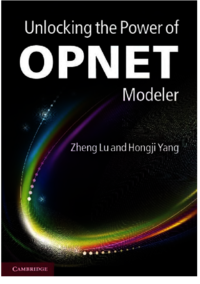
Unlocking the Power OPNET Modeler
89 Visitas | 137 Descargas | 2013-11-28 16:14:37 | fapaliza
Sigue una forma ordenada de como utilizar la herramienta OPNET Modeler . En su primera parte se describe como instalar OPNET y las interfaces de que dispone. En su segunda Parte describe como Modelar protocoos y Redes.En especial como crear modelos específicos utilizando APIs. En su tercera parte como modelar y modificar protocolos y redes.
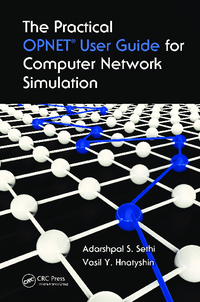
The Practical OPNET User Guide for Computer Network Simulation
Modelación y Simulación de Redes de Comunicaciones
79 Visitas | 128 Descargas | 2013-11-28 16:23:53 | fapaliza
Teachers of networking courses in universities constantly look for various new active learning tools for engaging students in classroom discussion, providing stu- dents with hands-on experiences, and getting students to become more interested in the subject area. OPNET software constitutes an excellent active learning tool that may help teachers achieve all these goals. In particular, OPNET software allows teachers to study and evaluate diverse networking systems with as simple or as complex topology as needed, illustrate various networking concepts, and show the students how the network performance changes under different conditions. It is no wonder that more than 500 universities worldwide* currently use OPNET network simulation software in teaching and research. This book is, to our knowledge, the rst text to provide a comprehensive descrip- tion of OPNET IT Guru and Modeler software and how to use this software for the simulation and modeling of computer networks. The book also includes a set of laboratory projects to help learn different aspects of the software.
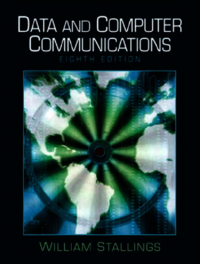
DATA AND COMPUTER COMMUNICATIONS
Redes de Computadoras
186 Visitas | 264 Descargas | 2013-11-28 18:22:38 | fapaliza
This book attempts to provide a unified overview of the broad field of data and computer com- munications. The organization of the book reflects an attempt to break this massive subject into comprehensible parts and to build, piece by piece, a survey of the state of the art.The book emphasizes basic principles and topics of fundamental importance concerning the technology and architecture of this field and provides a detailed discussion of leading-edge topics. The following basic themes serve to unify the discussion: • Principles: Although the scope of this book is broad, there are a number of basic principles that appear repeatedly as themes and that unify this field. Examples are multiplexing, flow control, and error control. The book highlights these principles and contrasts their application in specific areas of technology. • Design approaches: The book examines alternative approaches to meeting specific communication requirements. • Standards: Standards have come to assume an increasingly important, indeed dominant, role in this field. An understanding of the current status and future direction of technology requires a comprehensive discussion of the related standards. INTENDED AUDIENCE The book is intended for both an academic and a professional audience. For the professional interested in this field, the book serves as a basic reference volume and is suitable for self-study. As a textbook, it can be used for a one-semester or two-semester course. It covers the material in Networking (NET), a core area in the Information Technology body of knowledge, which is part of the Draft ACM/IEEE/AIS Computing Curricula 2005. The book also covers the material in Computer Networks (CE-NWK), a core area in Computer Engineering 2004 Curriculum Guidelines from the ACM/IEEE Joint Task Force on Computing Curricula. PLAN OF THE TEXT The book is divided into six parts (see Chapter 0): • Overview • Data Communications • Wide Area Networks xv xvi PREFACE • Local Area Networks • Internet and Transport Protocols • Internet Applications In addition, the book includes an extensive glossary, a list of frequently used acronyms, and a bibliography. Each chapter includes problems and suggestions for further reading. The chapters and parts of the book are sufficiently modular to provide a great deal of flex- ibility in the design of courses. See Chapter 0 for a number of detailed suggestions for both top-down and bottom-up course strategies.
Handbook of IPv4 to IPv6 transition
Transición de IPv4 a IPv6 una necesidad
79 Visitas | 119 Descargas | 2013-11-28 18:43:55 | fapaliza
is book takes you through the technology and issues associated with the implementation of IPv6. What is important to recognize is that not all the issues are fully resolved. e authors have succeeded in bringing clarity and scope of knowledge to the reader to enable use of the content in a pragmatic way allowing him to move forward and deploy IPv6 in real life situations.
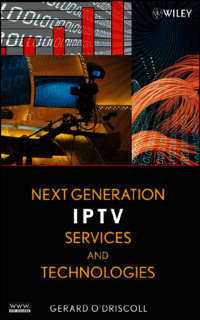
Next Generation IPTV Services
Servicio de Televisión en las Redes IP
95 Visitas | 142 Descargas | 2013-11-28 18:50:52 | fapaliza
Students and academics on postgraduate courses related to telecommunications, especially networking or IP protocols, will also ?nd the Next Generation IPTV Services and Technologies book ideal for supplementary reading.
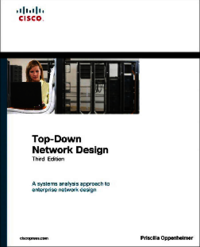
Top-Down Networks design
Diseño de Redes de Comunicaciones LAN, MAN y WAN
118 Visitas | 142 Descargas | 2013-11-28 18:59:30 | fapaliza
The purpose of Top-Down Network Design, Third Edition, is to help you design net- works that meet a customer’s business and technical goals. Whether your customer is another department within your own company or an external client, this book provides you with tested processes and tools to help you understand traffic flow, protocol behav- ior, and internetworking technologies. After completing this book, you will be equipped to design enterprise networks that meet a customer’s requirements for functionality, capacity, performance, availability, scalability, affordability, security, and manageability.

Voice over WLANs
Redes de Área Local Inalámbricas
107 Visitas | 119 Descargas | 2013-11-28 19:04:38 | fapaliza
The cost of a Wi-Fi interface has dropped from several hundred dollars to essentially zero; a Wi-Fi card is now a standard component in virtually every laptop sold. The penetration of that technology is now expanding to cell phones, PDAs, digital cameras, and other types of consumer electronics. Data rates have grown to 54 Mbps, and the new 802.11n radio link could push that to hundreds of millions of bits per second. Along with that we have seen important developments in security and manageability that make WLANs a trusted technology element in enterprise environments.
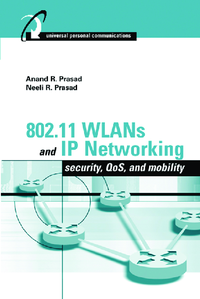
802.11 WLANs and IP Networking: Security, QoS, and Mobility
Redes Inalámbricas (WLAN)
103 Visitas | 174 Descargas | 2013-11-28 19:11:32 | fapaliza
A final chapter, Chapter 8, concludes the book with a vision for future. Definition for Fourth Generation (4G) mobile communications, Beyond Third Generation (B3G), and future generations are given. The need for these technologies from user, vendor, and operator perspectives is also discussed in this chapter. Technological enhancements needed from the protocol layer point of view and particularly for security, QoS, and mobility are also presented in the chapter. In this book several draft standards are discussed which might change with time; still the information in this book should be beneficial for understanding the interaction between the IP and MAC layers. We hope that this book will be of interest to business and technical managers and also to technical novices as well as experts in this field.
Contribuir
Usted puede contribuir con Libros UCLV, es importante para nosotros su aporte..
Contribuir